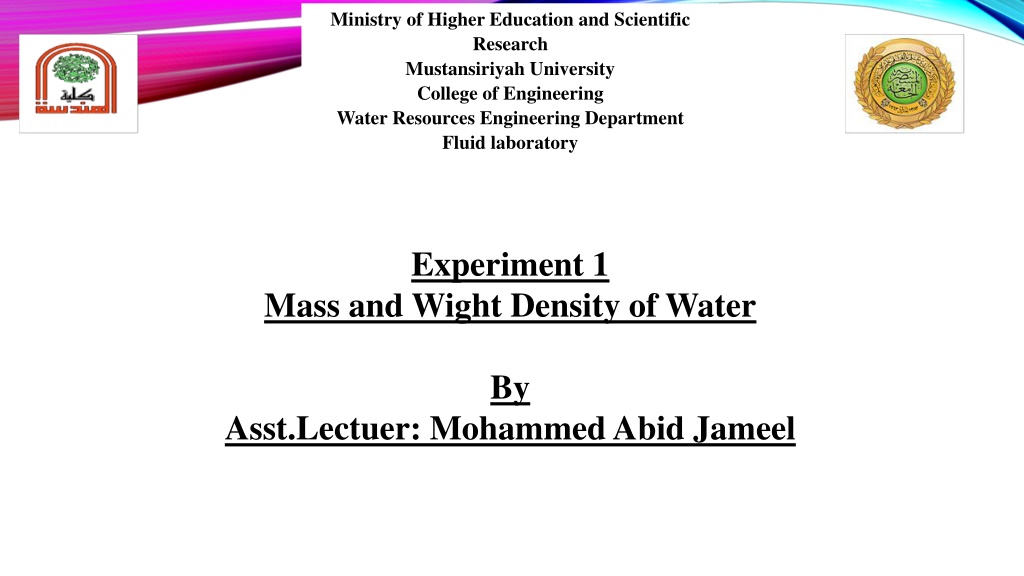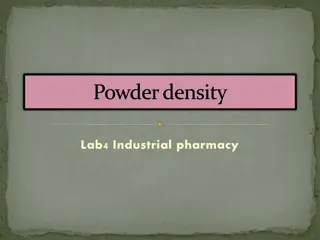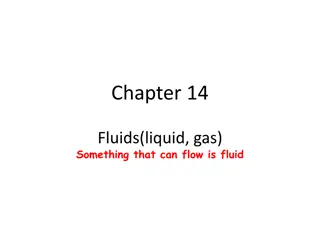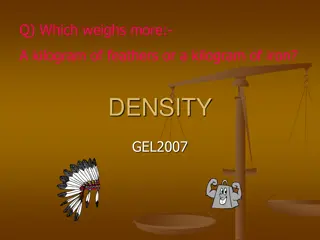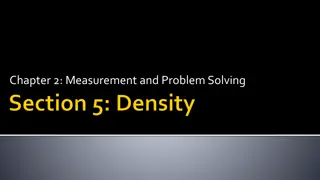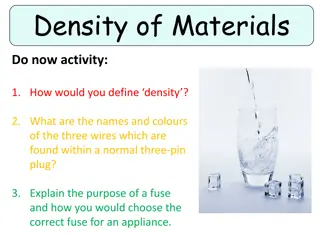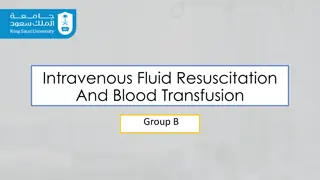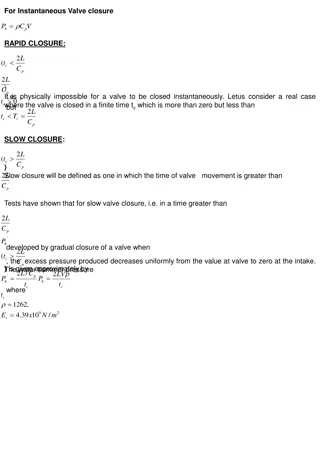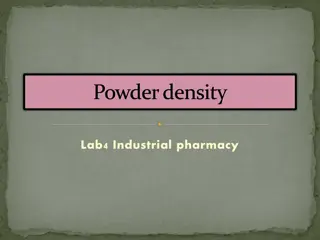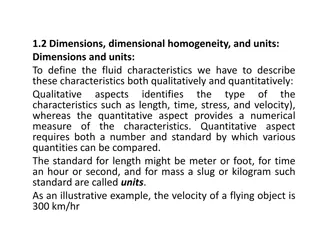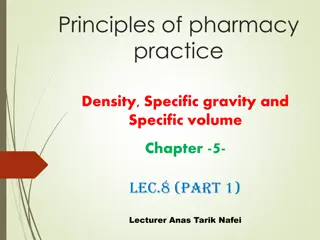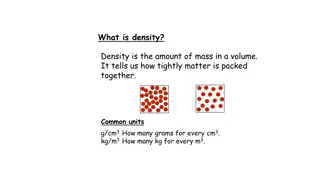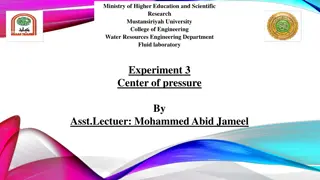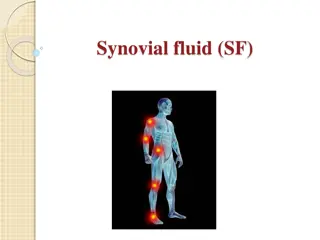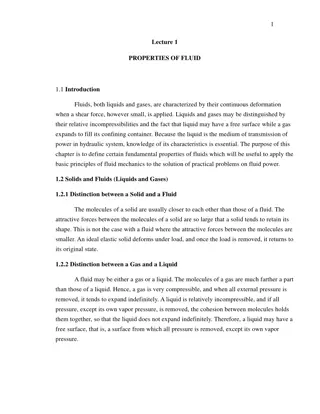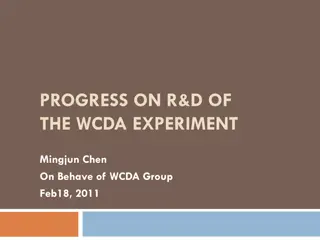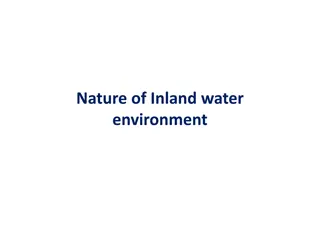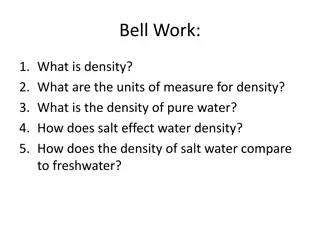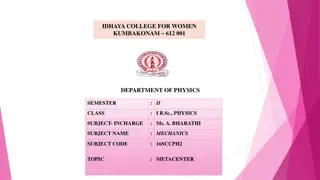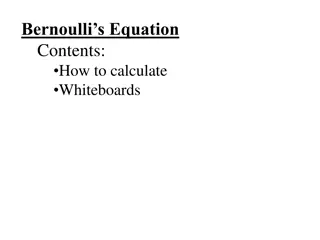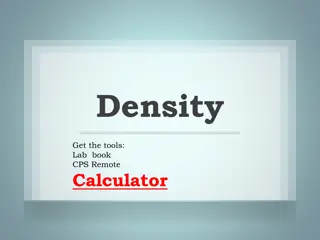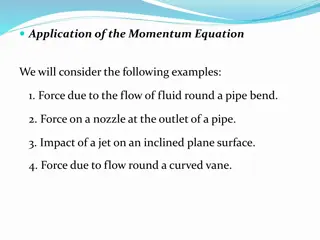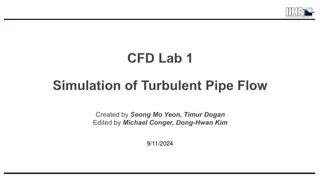Fluid Mechanics Experiment: Water Mass and Density Analysis
Discover the fundamental principles of fluid mechanics through an experiment analyzing the mass and density of water. Learn how to measure volume, calculate mass density, and explore the concept of density as a characteristic property of water. The experiment involves using equipment such as a graduated cylinder, water, and a balance to conduct measurements and calculations. Gain hands-on experience in understanding the properties of fluids and their behavior.
Download Presentation

Please find below an Image/Link to download the presentation.
The content on the website is provided AS IS for your information and personal use only. It may not be sold, licensed, or shared on other websites without obtaining consent from the author. Download presentation by click this link. If you encounter any issues during the download, it is possible that the publisher has removed the file from their server.
E N D
Presentation Transcript
Ministry of Higher Education and Scientific Research Mustansiriyah University College of Engineering Water Resources Engineering Department Fluid laboratory Experiment 1 Mass and Wight Density of Water By Asst.Lectuer: Mohammed Abid Jameel
1. Introduction: Fluid mechanics is the science that represents one of the branches of applied mechanics, where, it is interesting in study of the fluid movement and its stillness. Fluids have many properties, called (fluid properties). These properties are representing the fixed characteristics of fluids, which are not changed in normal conditions from one point to another as obtained in the flow characteristics. For example, these important properties include mass density, which is the mass of the volume unit, and the weight density that represents the force that affects the volume unit of the fluid by gravity. 2. Objectives: 1- Students will be able to measure the volume and mass of water and calculate its mass density, then calculate the density weighted. 2- Students will be able to explain that since any volume of water always has the same density, at a given temperature, that density is a characteristic property of water.
3.Theoretical background (equations) = m / V (1) = Mass Density of water (Kg/m3) m= Mass of water (Kg) V= volume of water (m3) = ( ) (g) ... (2) = Weight Density of water (N/m3) = Mass Density of water (Kg/m3) g is acceleration to the gravity (9.81 m/s2) Note: Force = Mass x acceleration N= Kg *m/s2
4. Experimental Work: 4.1. Equipment and apparatus: 1- Graduated cylinder, 100 Ml (Figure 1-A) 2- Water 3- Balance that measures in grams (able to measure over 100 g) (Figure 1-B) 4- Dropper A B Figure (1)
4.2. Procedure: 1- Find the mass of an empty graduated cylinder. Record the mass in grams in the chart on the activity sheet. 2- Pour 100 ml of water into the graduated cylinder. Try to be as accurate as possible by checking that the meniscus is right at the 100-ml mark. Use a dropper to add or remove small amounts of water. 3- Weigh the graduated cylinder with the water in it. Record the mass in grams. 4- Find the mass of only the water by subtracting the mass of the empty graduated cylinder. Record the mass of 100 ml of water in the chart. 5- Use the mass and volume of the water to calculate density. Record the density in the chart. 6- Pour off water until you have 50 ml of water in the graduated cylinder. If you accidentally pour out a little too much, add water until you get as close as you can to 50 ml. 7- Find the mass of 50 ml of water. Record the mass in the activity sheet. Calculate and record the density. 8- Next, pour off water until you have 25 ml of water in the graduated cylinder. Find the mass of 25 ml of water and record it in the chart. Calculate and record the density.
4.3. Data Sheet: Ran Volume (mm) Mass of empty cylinder (g) Mass of graduated cylinder + water (g). 1 100 2 50 3 25
5. Calculations and Results: 1- Find Mass of empty graduated cylinder (g). 2- Find Mass of graduated cylinder + water (g). 3- Calculate Mass of water (g) = (Mass of graduated cylinder + water (g)) - Mass of empty graduated cylinder (g). 4- Calculate Mass Density of water ( ) (Kg/m3) through equation (1) 5- Calculate Weight Density of water ( )(N/m3) equation (2) Ran Mass of water (g). Mass Density of ( ) water(Kg/m3) Weight Density of water ( )(N/m3) 1 2 3
6. Discussion: 1- Does any volume of water have the same mass density? Why? 2- How is the mass density proportional to size and mass? Why? 3- What is the relationship between mass and weight density? Why?
Thnke you Thank you
